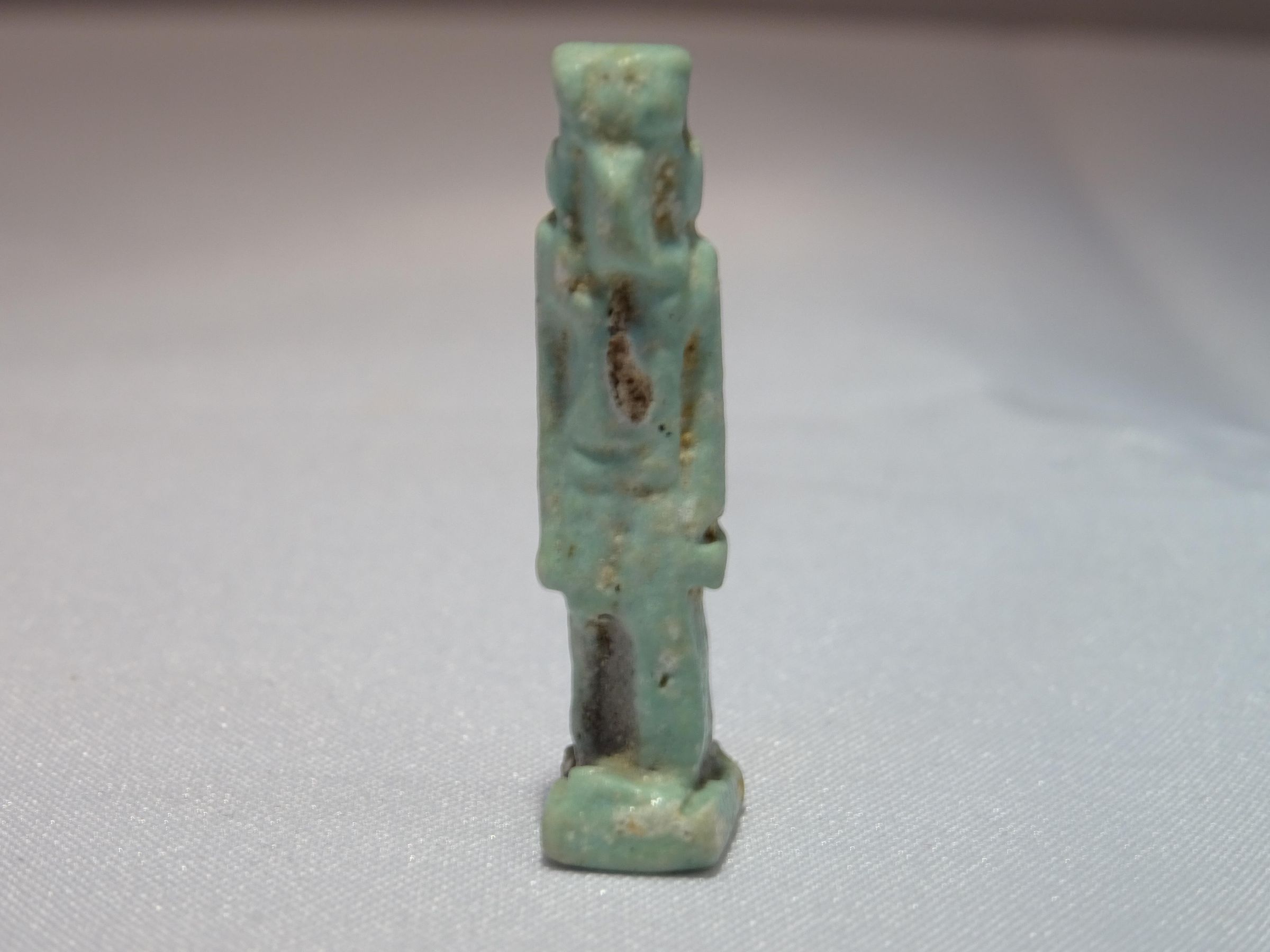Egyptian Faience Amulets- Thoth
Name/Title
Egyptian Faience Amulets- ThothEntry/Object ID
03EG0883lxDescription
Faience amulet of the god Thoth as a man in an upright, striding position with the anamorphic head of an ibis.Use
ProtectionContext
The Egyptians believed that misfortune and disease originated from malign spirits and the hostile dead. Maintaining health and prosperity was therefore achieved by providing protection against these forces. Amulets representing particular forces were worn around the neck for good luck and protection. They were also buried with the dead to ensure safe passage to the afterlife. The god Thoth, known to the Egyptians as Djehuty and among the oldest gods of their pantheon, was associated with knowledge, the invention of writing, justice and judgment, and oversaw the recording of events and the passage of time. Throughout the Dynastic Period he was worshipped as a lunar deity, patron of scholars and scribes, and, more rarely, as a cosmic deity and primeval creator. In the corpus of the iconography and mythological narratives of this period, Thoth is depicted in and assumes such diverse roles as divine vizier or scribe, judicial expert, physician, and embalmer. The god's amuletic forms may have therefore served to confer protection, health, knowledge, and perhaps a disposition to just and honest behaviour onto the wearer.Made/Created
Time Period
UnknownEthnography
Culture/Tribe
Egyptian

